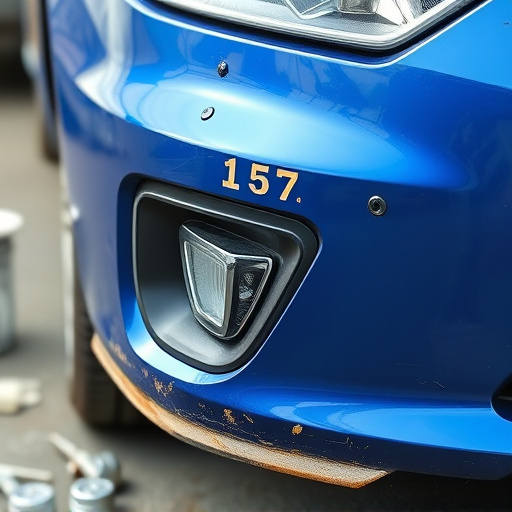Mercedes Active Brake Calibration: Integrating Radar and Camera Tech for Enhanced Safety

Mercedes Active Brake Calibration (ABC) is a critical safety feature utilizing radar and camera tech…….
Welcome to an in-depth exploration of a critical technology shaping the automotive industry’s future: Mercedes Active Brake Calibration (MABC). This innovative system, developed by Mercedes-Benz, represents a significant advancement in vehicle safety and autonomy. As the world shifts towards more advanced driver assistance systems (ADAS) and autonomous driving capabilities, understanding MABC becomes increasingly vital. In this article, we will unravel the intricacies of this technology, its global impact, economic implications, technological innovations, regulatory frameworks, and its role in shaping the future of transportation.
Mercedes Active Brake Calibration is an advanced driver-assistance system (ADAS) feature designed to enhance vehicle safety by improving braking performance during emergency situations. It uses a combination of sensors, cameras, and software algorithms to detect potential collisions and apply the brakes accordingly. The core components include:
The concept of active brake systems dates back to the late 20th century as researchers sought ways to improve road safety. Mercedes-Benz, known for its luxury and performance vehicles, has been at the forefront of ADAS development. Over time, MABC evolved from basic collision avoidance systems to sophisticated emergency braking assists. Today, it is a standard feature in many Mercedes-Benz models, contributing to their reputation as leaders in automotive safety technology.
MABC plays a pivotal role in the following aspects of modern automotive engineering:
The impact of Mercedes Active Brake Calibration is not limited to Germany; it has become a global phenomenon with widespread adoption and influence:
Several trends are driving the development and adoption of Mercedes Active Brake Calibration worldwide:
Different regions present unique challenges and opportunities for MABC:
| Region | Opportunity/Challenge | Example |
|---|---|---|
| Europe | Stringent Safety Regulations | The EU’s Advanced Driver Assistance Systems (ADAS) regulations have spurred rapid adoption of MABC across various vehicle classes. |
| North America | Growing Consumer Awareness | US consumers’ increasing demand for safety features has led to higher expectations for advanced braking systems. |
| Asia Pacific | Rapid Urbanization | High population density in urban areas necessitates sophisticated collision avoidance technologies. |
| Emerging Markets | Cost Considerations | Lower-income countries may face challenges in implementing MABC due to vehicle affordability and infrastructure limitations. |
The global market for Active Brake Calibration systems is experiencing significant growth, driven by:
Manufacturers and technology companies are investing heavily in R&D to enhance MABC capabilities:
The economic implications of MABC are far-reaching:
The field of Mercedes Active Brake Calibration is constantly evolving, driven by technological breakthroughs:
Looking ahead, several technological trends will shape the future of MABC:
Government regulations play a crucial role in the development and adoption of active brake systems:
Different countries have varying approaches to regulating MABC:
Despite its many advantages, Mercedes Active Brake Calibration faces several technical challenges:
Criticisms of MABC include:
Strategic Solutions:
Mercedes-Benz’s flagship S-Class sedan is renowned for its luxurious interior and cutting-edge technology, including MABC. In this case, the system demonstrates its capabilities on winding mountain roads:
Scenario: The S-Class navigates a narrow, uphill road with sharp curves. The vehicle detects an approaching car in the adjacent lane and, using camera and radar sensors, predicts a potential collision.
Response: MABC engages the brakes gently but effectively, allowing the driver to maintain control while preventing an accident. The system provides haptic feedback through the steering wheel, alerting the driver to the impending danger.
Outcome: This real-world application showcases how MABC can enhance driver safety without compromising the driving experience, ensuring that luxury and safety go hand in hand.
A city transit authority introduces MABC on its bus fleet to improve urban mobility and passenger safety.
Implementation: The transit agency partners with a technology company to install advanced braking systems in all new buses. These systems use GPS data and vehicle-to-vehicle communication to anticipate potential collisions, especially at intersections.
Results: Within the first year, there is a significant reduction in rear-end collisions and associated injuries. Passenger feedback reveals increased peace of mind during their daily commutes. The success leads to further adoption of MABC across the entire public transport network, improving overall road safety in the city.
The future of Mercedes Active Brake Calibration holds immense potential:
To capitalize on these prospects, stakeholders should:
Mercedes Active Brake Calibration represents a significant milestone in automotive safety technology, with global implications. Its ability to enhance vehicle safety, contribute to autonomous driving, and meet stringent regulations makes it an indispensable feature for modern vehicles. As technological advancements continue apace, MABC will play a pivotal role in shaping the future of transportation, ensuring safer roads for all.
Q: How does MABC differ from basic emergency braking systems?
A: Mercedes Active Brake Calibration is an advanced system that uses sophisticated algorithms and sensor fusion to predict and respond to potential collisions more accurately than traditional emergency braking. It aims to minimize the risk of accidents rather than just applying brakes in response.
Q: Can MABC completely replace a driver’s need for attention?
A: While MABC significantly enhances safety, it is not designed to replace human judgment or awareness. Drivers still play a crucial role in monitoring their surroundings and taking appropriate actions when needed. The system provides assistance but ultimately relies on the driver to make final decisions.
Q: How does weather impact MABC performance?
A: Weather conditions can affect sensor performance, especially in heavy rain or fog. Advanced algorithms are designed to compensate for these factors, but extreme weather may still present challenges. Regular system updates and calibration adjustments help maintain optimal performance across varying weather scenarios.
Q: Are there any safety risks associated with MABC?
A: Despite its benefits, MABC is not without potential drawbacks. If not properly calibrated or maintained, it might produce false positives or negatives, leading to unnecessary driver intervention or delayed responses. Regular system checks and updates minimize these risks.
Q: How does the cost of MABC impact its adoption?
A: The initial cost of integrating MABC into vehicles is a consideration for both manufacturers and consumers. However, long-term benefits, such as reduced insurance premiums and lower maintenance costs, often offset the initial investment. As technology advances, cost-effective solutions will likely become more prevalent, making MABC accessible to a broader market.

Mercedes Active Brake Calibration (ABC) is a critical safety feature utilizing radar and camera tech…….

Mercedes Active Brake Calibration (ABC) is a safety system requiring regular calibration by certifie…….

Mercedes Active Brake Calibration (MBC) is a safety technology that optimizes braking under diverse…….

Mercedes Active Brake Calibration (MAC) is a safety tech that optimizes braking performance through…….

Mercedes Active Brake Calibration (MBC) is a cutting-edge safety feature enhancing collision avoidan…….

Mercedes Active Brake Calibration (MABC) uses radar and camera data integration for precise collisio…….

Mercedes Active Brake Calibration (ABC) is a safety feature requiring expert post-collision inspecti…….

Mercedes Active Brake Calibration (MABC) is a critical safety feature optimizing braking performance…….

Mercedes Active Brake Calibration (MBC) is a safety feature using sensors to detect obstacles and ad…….

Mercedes Active Brake Calibration (ABC) is a cutting-edge safety feature that enhances vehicle braki…….